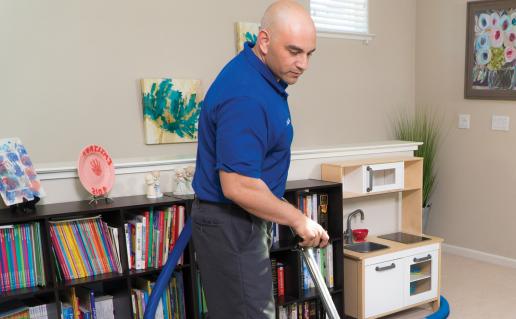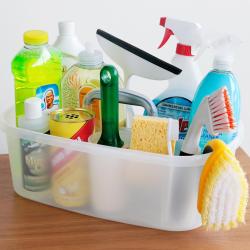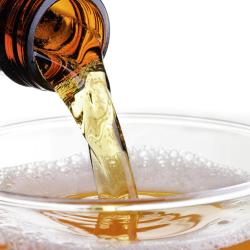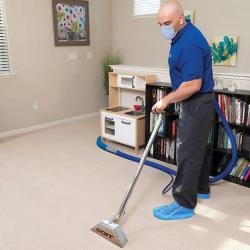COIT’s Guide to Removing Crayon Stains - History and Facts
If you have young ones in the house, or if kids ever visit your home, chances are you’re quite familiar with the paper and crayons that can often take over your kitchen table, right? And no matter how hard you try, it seems inevitable that any one of these crayon colors somehow finds a way to leave its mark on your plush, clean carpeting. Yikes!
Well, thanks to this do-it-yourself stain removal guide from COIT, you’ll have a few handy solutions to try when you’re wondering how to remove crayon stains.
Before we dive into specific crayon stain removal techniques, let’s learn a bit more about the ingredients in crayons.
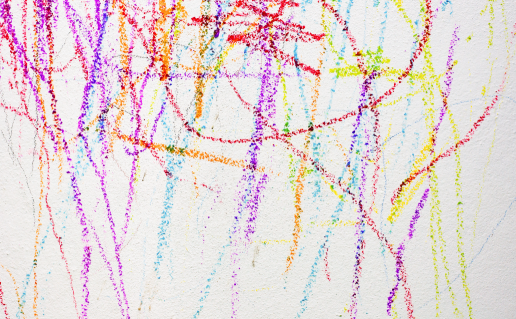
What Are Crayons Made of?
When you’re thinking about removing crayon stains, it’s helpful to know the ingredients in crayons so you understand what type of chemicals you’re trying to remove. Typically, crayons contain colored wax or charcoal; more specifically, they’re usually made of petroleum paraffin wax.
How Are Crayons Made?
To make a crayon, paraffin wax is first heated and then cooled. This is done so the wax reaches a temperature in which it can be dyed and manufactured into – you guessed it – a crayon! To find out more about the “Life of an American Crayon”, check out this video Crayola made to give you a closer look into how crayons are made.
The History of Crayons
The first crayons actually date back thousands of years to the Egyptian times. Egyptians figured out a way to take hot beeswax and color pigment and bind color into stone, which is also known as encaustic painting. The Romans and Greeks were also known to do this. Do you think they had a solution to the question of how to remove crayon stains? Who knows!
In Europe, the first signs of crayons date back to 1495, where famous artist and thinker Leonardo da Vinci used the first cylinder shaped crayons made of charcoal and oil.
Conte crayons, which originated in Paris, were used in the late 1790s. Conte crayons are basically a mix between a pastel and a paraffin wax crayon.
Crayola Crayons is Born
So when did the American crayon companies get their start? On June 10, 1903, Binney & Smith, which is now known as Crayola, came out with their own line of wax crayons. Alice Binney (Edwin Binney’s wife) was the one who thought of the name Crayola. She took the French word for chalk – “craie” – and combined it with the first part of the name of the oily paraffin wax called “oleaginous”. And waaaalaaaa! “Crayola”, a brand that’s still famous for its crayons, was born!
With over 132 colors, Crayola shows no signs of slowing when it comes to dominating the crayon market!
Now that you know a bit more about what crayons are made of and how they came to exist over thousands of years, you can approach that stubborn crayon stain armed with a bit more background information.
Check out COIT’s guide to crayon stain removal to get step-by-step guidance
How to Remove Crayon Stains from Carpet
COIT's Guide on How to get Crayon Stains out of Carpet
Who doesn’t love to color? Kids certainly do! And thanks to the invention of crayons, they can color to their hearts’ content.
So what do you do if their love of art ends up wreaking havoc on your beautiful, plush carpeting? You can start by checking out COIT’s in depth guide to figure out how to remove crayon from carpet.
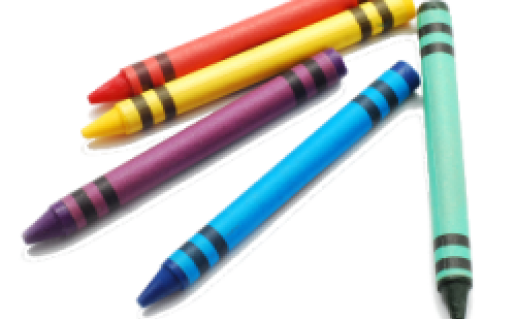
How to Get Crayon Out of Carpet – Method # 1
Before you tackle the question of how to remove crayon from carpet, remember that any type of stain is more likely to come out if you act fast – so get movin’!
- As soon as you discover the stain, gently scrape any remaining crayon residue from the surface.
- Using a small amount of carpet cleaner, add a small amount to the affected area and blot with a clean towel or absorbent pad.
- Repeat Step 2 over and over until the crayon stain disappears.
- Allow the crayon stain to dry.
Trouble removing your stain? Find discounts in your area - Limited time only!
How to Get Crayon Out of Carpet – Method # 2
- Upon discovering the crayon stain, see if you can remove any excess colored wax using a dull knife.
- Next, wrap an ice cube in a plastic bag and apply the plastic bag directly on top of the stained area. This will freeze any wax residue that remains.
- Cover the stained area with a clean white cloth.
- Using the tip of a warm iron (not too hot!) press into the cloth. As you repeat this step, more and more colored wax should start to transfer from the carpet to the cloth.
- If you still see any color on the carpet after completing steps 1 through 4, sponge the affected area of the carpet using a dry-cleaning solvent.
How to Get Melted Crayon Out of Carpet
It’s one thing to try and get rid of a dry crayon stain – but how do you handle getting rid of crayon that’s actually melted?
If the two above mentioned do-it-yourself techniques don’t seem to be working effectively for melted crayon, try this method to remove crayon from carpet:
- Take blue dawn dish soap and mix several drops with a cup of warm water.
- Place a white cloth directly over the stained area of your carpet.
- Pour the soapy water onto the cloth and let it soak into the crayon stain.
- Take a warm iron (on the low setting) and place it over the stain. Let the iron sit for a few minutes.
- Repeat step 4 several times or until the stain is no longer visible.
- Dry the carpet with a fresh towel, blotting until all of the liquid has been absorbed.
Give these do-it-yourself solutions a try. If you’re still seeing a lot of crayon residue, you may want to consider investing in professional carpet cleaning services to dig deeper into the stain. Give COIT carpet cleaning a call today to learn more about our services and don't forget to checkout our coupons!
Remember to always do a spot removal test on a portion of carpet or upholstery that is normally not visible. These are suggested treatments only and COIT can't be held accountable for any damage sustained by use of the treatments in this spot removal guide.





